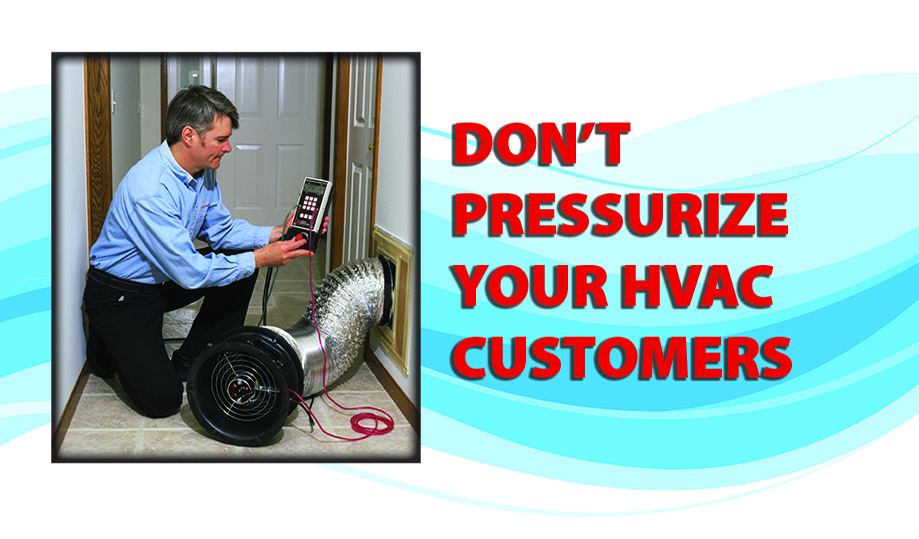The card instructs you to measure the room pressure and then slowly crack open the door until you reach an acceptable ∆P, then measure how much the door is open. This is enough data to size a passive return properly.

for house pressurization
using a TEC Duct Blaster®.
A QR code on the front of the card links to a video with detailed instructions on how to use it. You will need a micro-manometer like the DG-8 that measures pressure in pascals.
The Roomulator will help you size passive returns but will not address combustion air issues or duct leakage. I recommend attending National Comfort Institute’s Carbon Monoxide training to learn more about combustion air.
You can measure duct leakage with either a TEC Duct Blaster or by taking a known airflow measurement at the equipment and subtracting the measured airflow at both the grilles and registers.
The difference between the two measurements is live duct leakage.
When you start to think of a home as part of the system while considering its pressures, diagnosing safety, health, comfort, and efficiency issues becomes much easier.
Measuring is always the first step to identifying HVAC-related problems, including building pressure issues.
Learn to solve these problems and unlock another revenue stream within your business to put you one more step ahead in your marketplace of your former competition.
Adam Mufich serves the HVAC industry as a curriculum developer and instructor for National Comfort Institute, Inc. (NCI). NCI specializes in training that focuses on improving, measuring, and verifying HVAC and Building Performance. If you’re an HVAC contractor or technician interested in learning more about air sealing benefits, contact Adam at ncilink.com/ContactMe. NCI’s website www.nationalcomfortinstitute.com is full of free information to help you improve your professionalism and strengthen your company.













Recent Comments